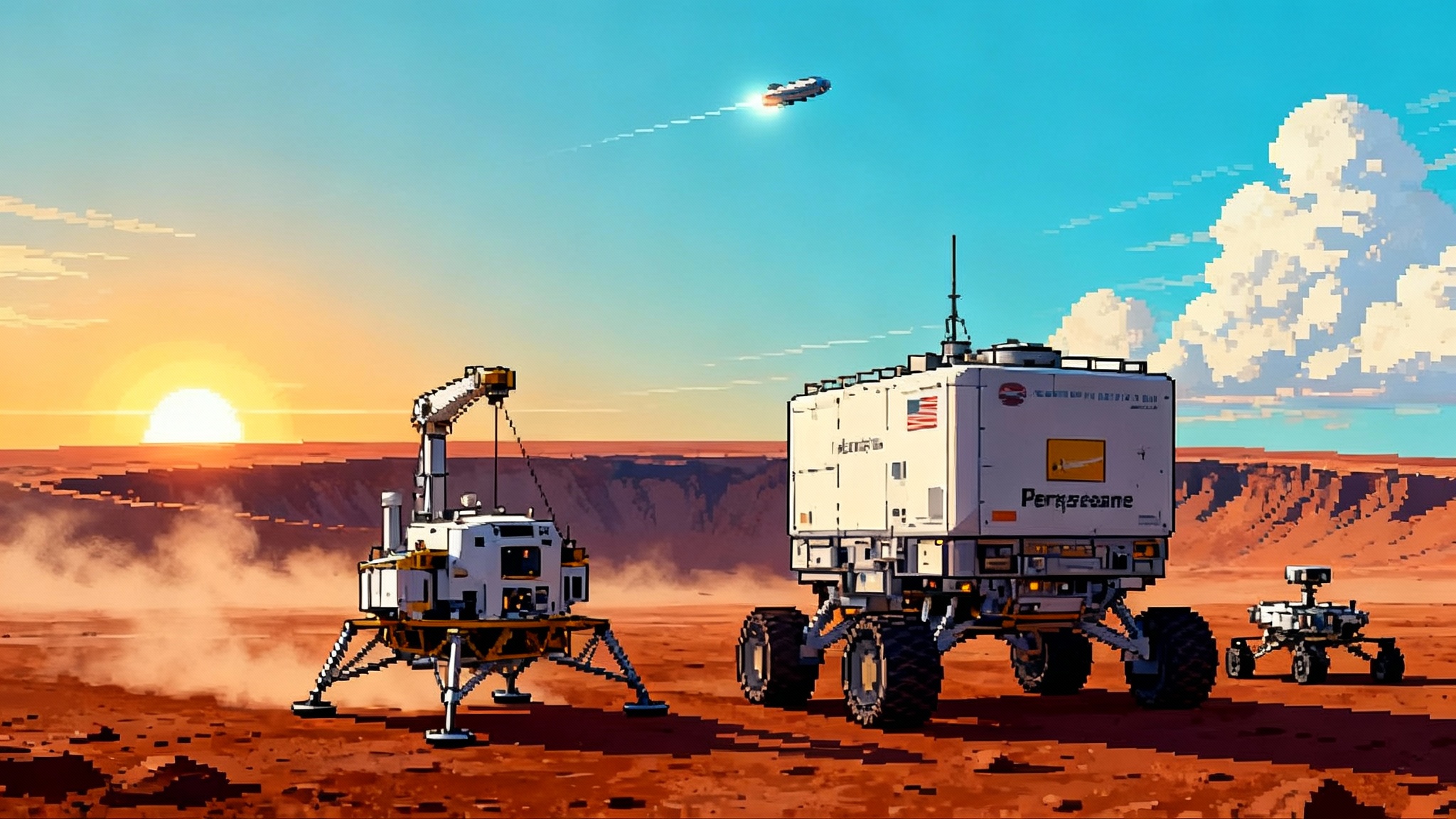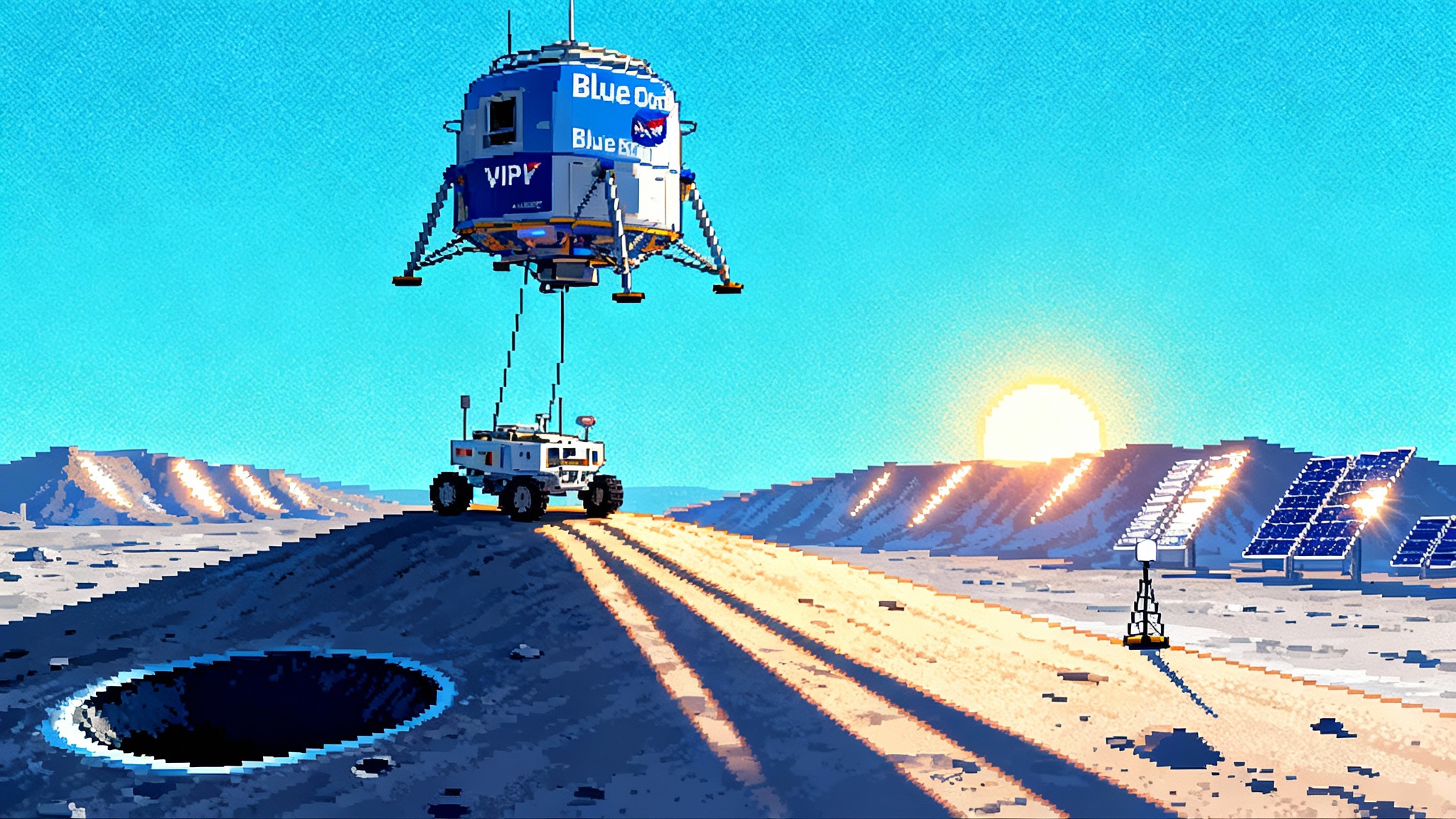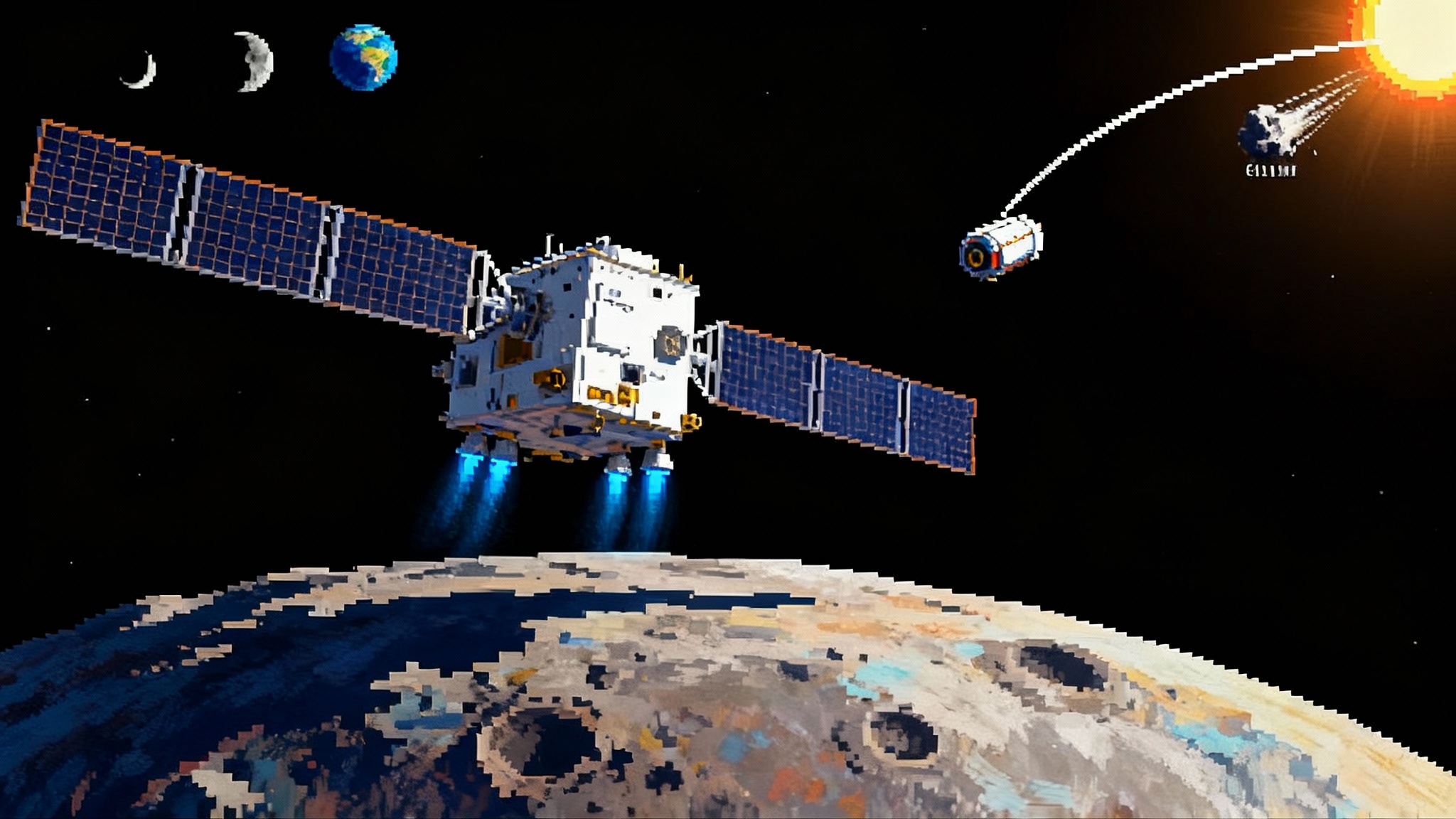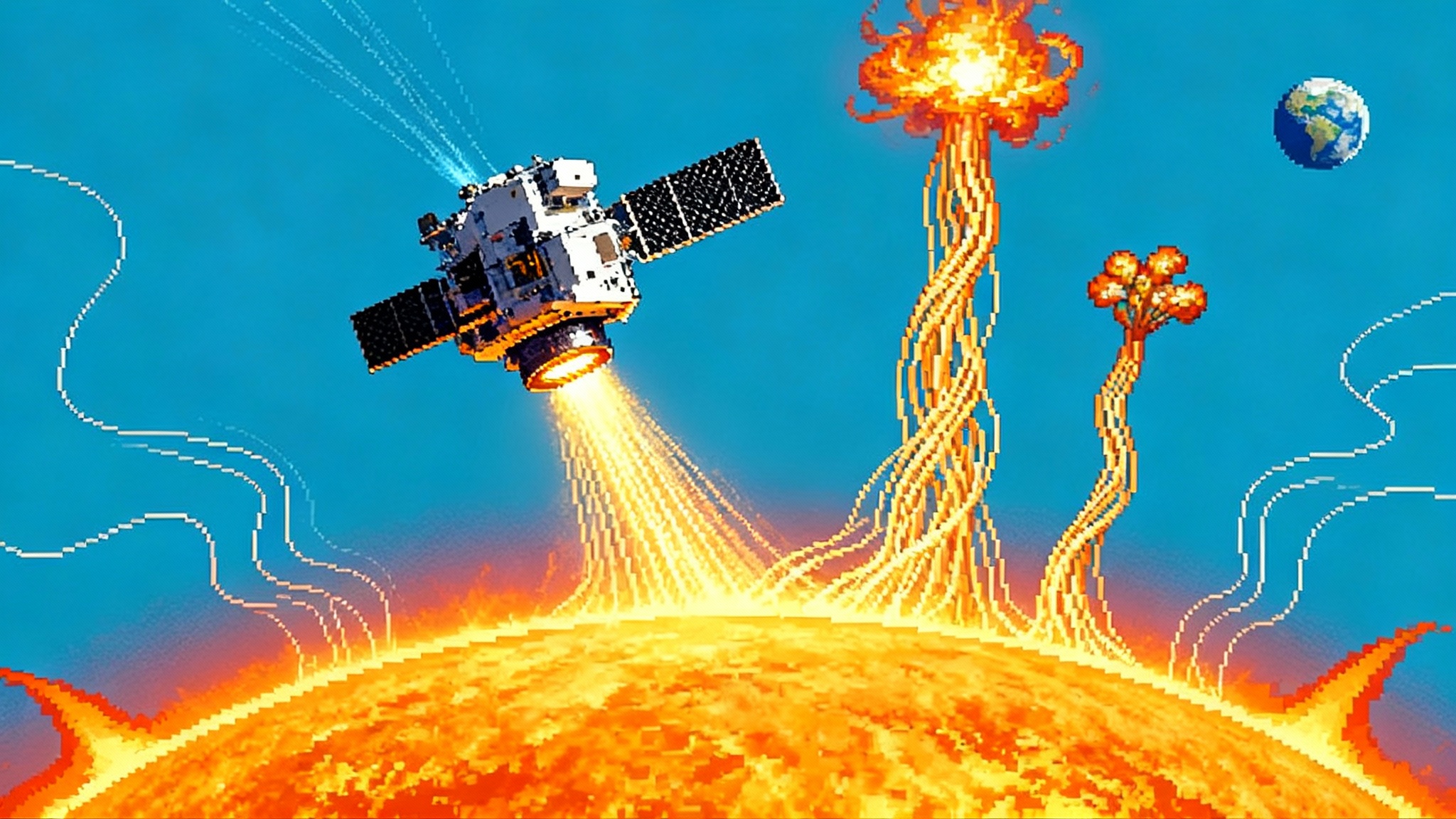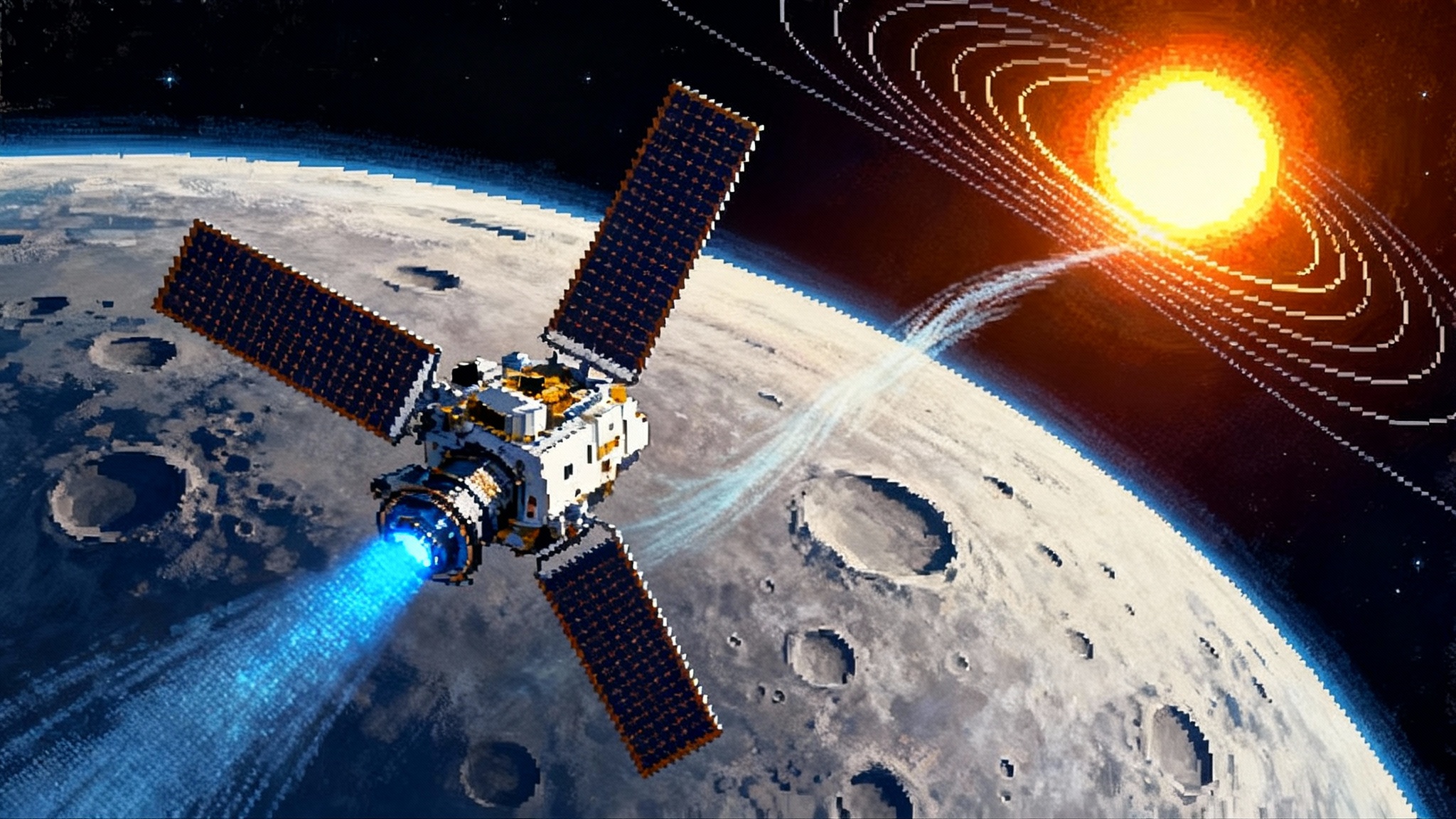Chang’e‑6 rewrites the Moon playbook: a cooler far side
Fresh peer-reviewed results from late September and early October 2025 show the lunar far side’s mantle is cooler, drier, and poorer in heat-producing elements than the near side. Here is what that means for site selection, power, ISRU, and radio science over the next five years.
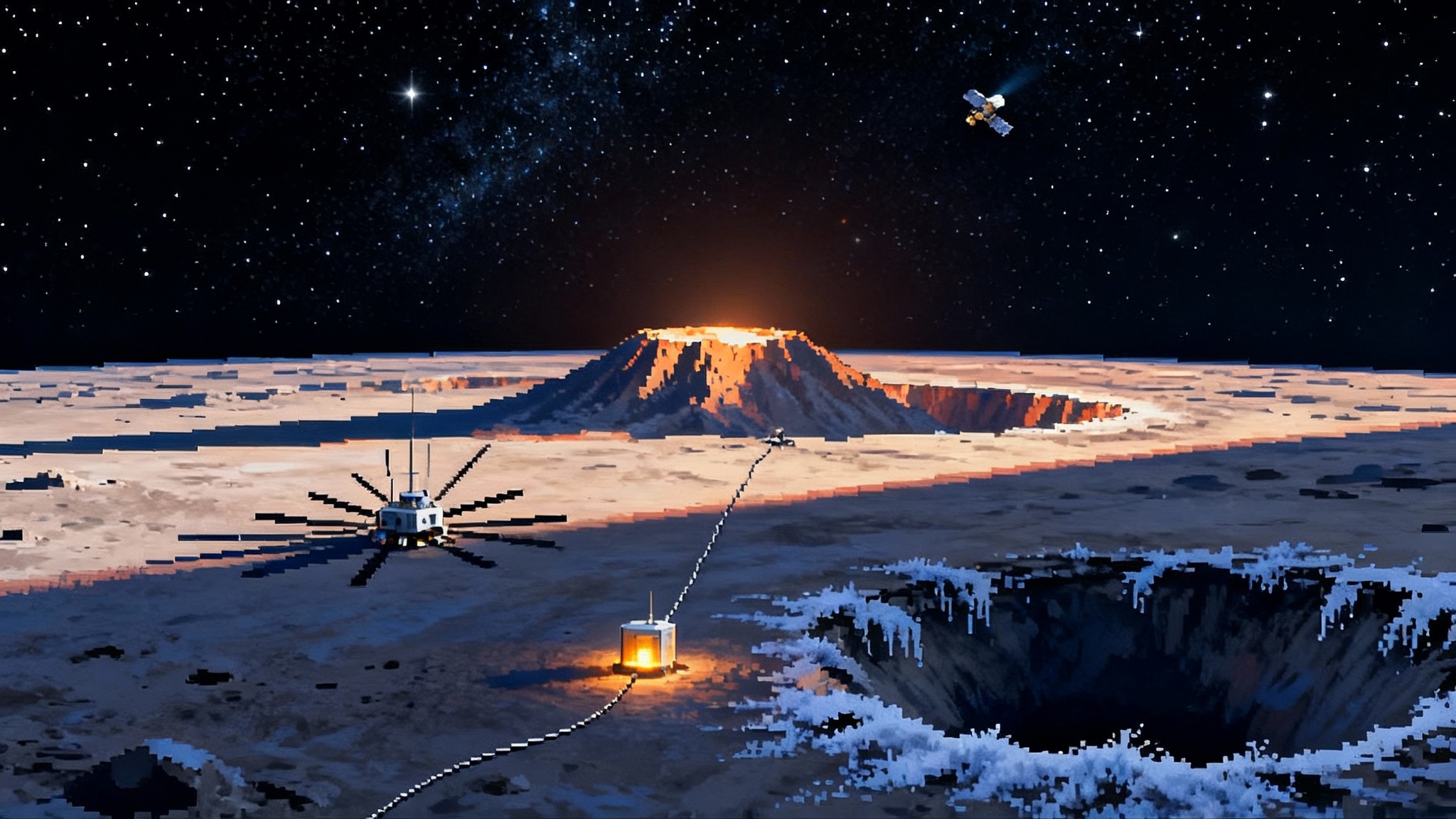
The result that changes the map
Call it a quiet revolution. In late September and early October 2025, a wave of peer-reviewed papers on China’s Chang'e-6 samples finally gave scientists what they have not had before: ground truth from the lunar far side. The headline is simple enough to fit on a mission patch. The far side’s mantle looks cooler, drier, and depleted in heat-producing elements compared with the near side. That trio of traits does more than update textbooks. It resets assumptions about where to land, what resources to expect, how to power outposts, and why the far side should host the first truly radio-quiet science base.
This is not a small tweak. If you were planning a trek across a desert and learned the aquifers were deeper, the sun harsher, and the bedrock different than your training ground, you would rethink your route, your supplies, and your communications. Chang'e-6 is that message from the other side of the Moon.
What the samples say, in plain language
-
Cooler mantle: The chemistry and crystallization temperatures recorded in far-side basalts indicate lower internal heat than similar near-side rocks. The simplest reason is less natural radiogenic heating from elements like potassium, thorium, and uranium. One study pegs far-side lavas at roughly 100 degrees Celsius cooler during formation than typical near-side equivalents, consistent with a mantle short on those heat sources, as reported by Reuters on Nature Geoscience results.
-
Drier mantle: Measurements from tiny glassy inclusions and mineral structures in the Chang'e-6 fragments show water contents in the mantle source region around 1 to 1.5 micrograms per gram, at the lower edge of, and often below, comparable near-side values. The Chinese Academy of Sciences summarized these results and their implications in April 2025 in a Chinese Academy overview in April 2025.
-
Depleted in heat-producing elements: The far-side samples carry very low trace abundances of the usual radiogenic suspects. That matters because radioactive decay of potassium, thorium, and uranium is the Moon’s long-tail space heater. Less of them means the far-side interior cooled faster, helped volcanism fade earlier, and let the crust stay thicker and tougher.
Put together, the picture is a Moon with a warm, rich kitchen on the near side and a spare pantry on the far side. Same world, different recipes.
How we know, step by step
Chang'e-6 brought back 1.9 kilograms of regolith and small rock fragments from Apollo crater inside the South Pole-Aitken basin. That basin is a planetary scar the size of a continent. Scientists then applied lab techniques that read history written inside crystals and glass. A few examples:
-
Thermometers frozen in stone: The size and composition of crystals like pyroxene and plagioclase, plus mineral zoning patterns, reveal the temperature at which lavas crystallized. Think of growth rings on a tree that also encode the weather.
-
Elemental fingerprinting: Trace amounts of thorium, uranium, and potassium are measured at parts-per-million levels. These are the slow-burn fuels for internal heat. Sparse fuel, cooler interior.
-
Water by microprobe: NanoSIMS and related methods can detect tiny hydrogen and hydroxyl signals in melt inclusions. These are microscopic pockets of ancient magma trapped inside crystals, time capsules from deep below the surface. On the far side, those pockets are unusually dry.
-
Ages that bracket the story: The samples include volcanic clasts clustering around two big eras, about 4.2 billion and 2.8 billion years ago. That span shows the far side did erupt for a long time, but not with the sustained vigor found across the near-side maria. Other Chang'e-6 teams also argue for a 4.25-billion-year age for the South Pole-Aitken impact melt, a cornerstone for rebuilding lunar chronology.
Each technique adds a piece. Together they point in the same direction: a thermally starved and water-lean far-side mantle.
The big implications in one page
- Rethink site selection on both sides
-
Far-side landings will not be saved by latent internal heat. Deployments must be designed for deep cold, long nights, and limited subsurface warmth. Thermal inertia will be your enemy. Pick terrain that buys you power and line of sight to the sky, not the hope of mild subsurface conditions.
-
Near-side sites that sit within or beside the Procellarum KREEP Terrane remain your best bet for heat-rich geology, diverse volcanics, and materials research that benefits from higher incompatible element content.
-
For International Lunar Research Station planning, South Pole-Aitken rim regions remain scientifically golden, but treat them as power-hungry construction zones rather than passive warm platforms.
- Revise expectations for ice and volatiles
-
The far-side mantle being dry does not erase ice at the poles. Most polar water ice is thought to be delivered by comets and solar wind and cold-trapped in permanently shadowed regions. Those surface and near-surface ices are almost independent of deep mantle hydration.
-
What changes is the endogenic backstop. Do not count on deep moon-made water bubbling up to refresh your resource. Plan as if exogenic ice is finite, patchy, and fragile.
-
Map, verify, and meter. The next five years should establish a common measurement playbook for ice prospecting: neutron spectrometer passes, ground-penetrating radar grids, thermal and albedo models, then shallow coring. Tie use permits to verified reserves and recovery rates. For context on polar prospecting and risk, see how VIPER reboot targets polar volatiles.
- Power and thermal plans get stricter
-
With less internal heat and long 14-day nights, forget marginal margins. If a habitat or plant could squeak by near side, it will struggle far side. Solar-only outposts must scale energy storage aggressively. That means big batteries, regenerative fuel cells, or both. Weight the trade by deliverable kilowatt-hours per kilogram, not just nameplate watts.
-
Nuclear fills the winter. Small fission surface power or advanced radioisotope systems provide the headroom you need in a cold, dry, heat-poor environment. Several agencies and companies are already designing compact fission units in the 10 to 40 kilowatt class. Put those at the top of your far-side architecture.
-
Heat as a resource. Waste heat management becomes design-critical. Recover it from fuel cells during night. Use phase-change materials to buffer science instruments. For processing plants, recycle thermal energy between unit operations like oxygen extraction and sintering. To match power needs with lift capacity, track the rising cadence of heavy-lift vehicles, including milestones like Starship Flight 11 opens the V3 road.
- In-situ resource utilization must assume lean feedstock
-
Oxygen from regolith is still viable almost anywhere. Molten regolith electrolysis and hydrogen or carbon monoxide reduction do not demand water-rich inputs. Design oxygen plants to run on common anorthosite and low-iron basalts, not just ideal ilmenite-rich soils.
-
For water, site choice and logistics rule. If your mission depends on water, pick a polar location with confirmed ice. If your mission just benefits from water, plan to import it as needed, and engineer your loop to minimize losses. Treat water like propellant on the critical path.
-
Metallurgy will hinge on electricity, not geology. With fewer heat-producing elements and lower iron in many far-side soils, expect higher specific energy costs for metals. Solve with process efficiency and power abundance rather than hoping for a lucky ore body.
The communications pivot: build the far-side backbone now
The far side remains radio-quiet because the Moon itself blocks Earth’s emissions. That makes it the best place in the Solar System to explore the low-frequency universe, from the cosmic Dark Ages to space weather. The catch is that the same blockage also cuts you off from Earth.
China’s Queqiao-2 relay now orbits to support far-side and south-polar missions through at least 2030, and it already proved its worth by supporting Chang'e-6 operations. A robust far-side decade will need more than a single link. You need resilience and bandwidth. For a sense of China’s broader deep-space momentum, see how Tianwen-2 shows program momentum.
Here is a practical plan for 2026 to 2030:
-
Redundancy: At least two active relay assets with overlapping footprints. One in a distant retrograde or halo-like path for steady geometry and a second in a low frozen ellipse to improve data rates and polar coverage.
-
Cross-program service: Treat relays as shared infrastructure. Artemis surface teams, Commercial Lunar Payload Services deliveries, and International Lunar Research Station missions should be able to buy relay time like they buy launch services.
-
Standards now, not later: Adopt common timing, pointing, and spectrum use standards for far-side operations. Do not force future radio astronomy to work around ad hoc communications choices.
-
Triage the data: Radio astronomy and volatile prospecting will produce bursty and high-value datasets at night. Prioritize night-side downlinks and provide storage buffers on the relay.
NASA’s near-term deliveries point the way. Firefly Aerospace’s planned far-side landing for the LuSEE-Night radio pathfinder includes a dedicated relay payload and demonstrates how to package science, surface operations, and communications together. NASA describes this as a step toward low-frequency cosmology in a radio-quiet zone while also proving out far-side logistics.
The case for a radio-quiet science outpost
A small, smart outpost on the far side can do something hard to do anywhere else: open a new window on the universe below 30 megahertz. Ground arrays on Earth are blocked by our ionosphere and deafened by our own noise. The far side during lunar night is like a mountain cabin after a fresh snow, miles from the nearest road, where you can finally hear the wind in the pines.
What belongs at such an outpost:
-
A pathfinder radio array with modular arms you can extend campaign by campaign. Start with a LuSEE-Night-class station, then add lightweight dipoles across a one to ten kilometer baseline.
-
Power sized for the night. Pair solar with regenerative fuel cells for the first deployments. Transition to a compact fission unit once crews or larger robots arrive.
-
A quiet zone charter. Define spectrum rules that every visiting mission agrees to follow. Limit transmitter use during the two-week night and introduce quiet hours synced to planned observations.
-
A shared machine shop. Place a small additive manufacturing and repair capability on site to keep antenna arms, cables, and connectors in service without constant resupply.
The scientific payoff ranges from maps of the low-frequency sky to constraints on the first neutral hydrogen signals after the Big Bang. The engineering payoff is a community that learns how to build and power in the toughest place the Moon offers.
Strategy, translated into actions
If you work Artemis surface architecture:
-
Move far-side relay procurement up by a year and buy capacity, not just hardware. Treat it like a network contract with service-level agreements for uptime, latency, and downlink windows.
-
Set a polar resource certification policy. No major surface element should depend on unverified ice. Require at least one season of on-site prospecting before committing to long-lived water infrastructure.
-
Lock in a dual-power approach for any far-side presence. Solar plus storage for day. Baseline nuclear or extended fuel cells for night. Design heat recovery loops into life support and processing from the start.
If you work International Lunar Research Station planning:
-
Choose a South Pole-Aitken rim site for science, but design logistics as if you will never discover a generous water seam nearby. Build in tanker cadence and storage.
-
Publish radio-quiet operating procedures and invite international sign-on. Make them the default for all ILRS missions that enter the far-side hemisphere.
-
Tie ISRU demonstrations to realistic feedstocks. Run oxygen extraction on common anorthosite and low-iron basalts to prove value on the far side’s average soils, not only at near-side rich patches.
If you fund science payloads:
-
Pay for night power and thermal control. Instruments will fail without it. Budget for heaters, insulation, and the extra watts to run through the cold.
-
Favor payloads that produce information others can use to plan. Subsurface radar, neutron mapping, and precision thermometry create data that reduces risk for every later mission.
-
Ask for interoperable communications and scheduled quiet windows. A little discipline here keeps the far side special.
What this does not change
Some things remain true regardless of mantle temperament.
-
The poles are still the place to be for water ice, especially in permanently shadowed regions. Those are controlled by surface temperature and cold traps, not by deep mantle hydration.
-
The near side remains a natural factory for diverse geology. If your mission needs variety in basalts and trace elements, plan your sorties or samples there.
-
The far side is still the ultimate lab for radio silence. Chang'e-6 makes the engineering case stronger, not weaker, because it tells us to expect harsher nights and to plan power accordingly.
A new five-year playbook
-
2026: Fly at least one dedicated far-side relay with high-rate downlink and polar coverage. Deliver a small night-capable radio pathfinder and a battery of volatile prospecting tools to a South Pole-Aitken rim site.
-
2027: Demonstrate continuous night operations with regenerative fuel cells or a small fission unit. Publish the first full-night low-frequency sky maps from the far side.
-
2028: Stand up a shared far-side communications service. Begin modular build-out of a scalable radio array and field an oxygen-from-regolith pilot line tuned for low-iron feedstocks.
-
2029: Certify at least one polar ice field with drill cores, radar grids, and mass balance models. Negotiate and adopt an international far-side radio-quiet code of conduct.
-
2030: Commit a multi-mission outpost plan that ties power, communications, and science into a single location, with a clear logistics cadence and a cross-program user base.
The bottom line
Chang'e-6 did more than sample a new neighborhood. It exposed a different Moon beneath that neighborhood. Cooler. Drier. Lean on internal heat. That clarity nudges explorers toward power-first designs, disciplined resource planning, and a shared far-side backbone for communications. It also strengthens the case for something only the far side can offer: a truly quiet ear on the universe. Build for the night, do the hard science, and treat the far side as the Moon’s deep end. That is how this breakthrough turns into a decade of progress.
